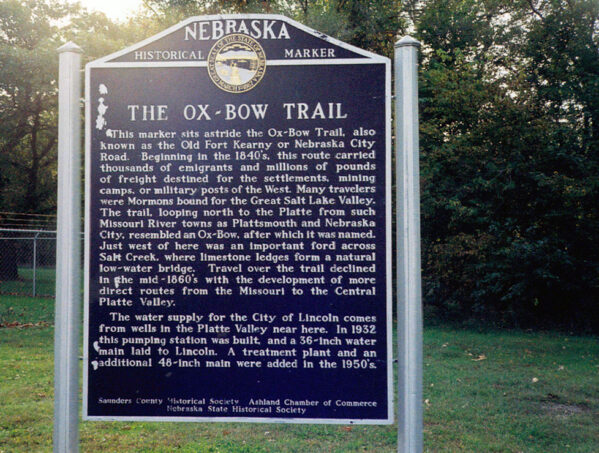Miles:
104
Strategic Air Command & Aerospace Museum
while you are stopped, learn about: Ox-Bow Trail
Ashland, Nebraska; Saunders County
The Strategic Air Command (SAC) & Aerospace Museum, located between Lincoln and Omaha near Interstate 80, utilizes over 300,000 square feet of exhibit, education, and event space to entertain, educate, and inspire its guests. The museum, first opened in 1959. It became well-known by allowing the public to visit an impressive array of aircraft that helped SAC preserve the peace and ultimately win the Cold War.
In a natural extension of the Omaha community’s civic pride and longstanding support for Offutt Air Force Base, community leaders began a campaign to develop a new state-of-the-art facility that would not only house SAC aircraft and artifacts but also provide a venue for the restoration of aircraft, preservation, and display of historical artifacts, and the education of future generations in the areas of history, deterrence, technology, and science. The museum moved to its current location in 1998.
Heading into its 25th year of existence and under the new leadership of retired U. S. Astronaut Clayton Anderson, the museum seeks to continue the recognition and appreciation of its heritage as the keeper of SAC’s history while exploring ways to better “tell the story” of its unique artifacts and SAC’s efforts to preserve the peace and win the Cold War.
Resources:
Aircraft Restoration
The complete restoration of an aircraft at the Museum takes, on average, two years and approximately 10,000 man-hours of labor. Usually, only one aircraft is worked on at a time, due to space in the restoration hangar, as well as the quantity of volunteers. In a normal month, volunteer time donated to the restoration effort will total from 600 to 1,000 hours. The annual total of volunteer hours in restoration is around 8,000.
The Museum’s restoration process focuses on restoring the aircraft for static display purposes only, due to the quantity of aircraft to restore, finances (it would take more than ten times the funding to restore an aircraft to flight worthy condition), and practicality (the Museum does not currently have a runway). The Museum restoration department strives to return dignity to the aircraft by structurally preserving and restoring to original condition.
While you are stopped, learn about: Ox-bow Trail
This historical marker can be found along the Ox-Bowl Trail, which is also referred to as the Old Fort Kearny or Nebraska City Road. From the 1840s onwards, this trail served as a vital route for emigrants and freight heading towards settlements, mining camps, or military posts in the Western United States. The trail was particularly popular among Mormons en route to the Great Salt Lake Valley. The trail followed a looping path northward to the Platte River from towns such as Plattsmouth and Nebraska City, and was named after the Ox-Bow shape it resembled. A significant ford across Salt Creek, where limestone ledges formed a natural low-water bridge, was located just west of this marker. By the mid-1860s, travel along the trail had declined with the development of more direct routes from the Missouri to the Central Platte Valley.
The City of Lincoln’s water supply is sourced from wells in the Platte Valley near this location. In 1932, a pumping station was constructed and a 36-inch water main was installed to transport the water to Lincoln. Additional infrastructure was added in the 1950s, including a treatment plant and an extra 48-inch main.

These buttons follow the default direction of each route. You can use the previous button to move in the opposite direction, or edit your team’s settings in the manager dashboard.





